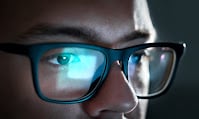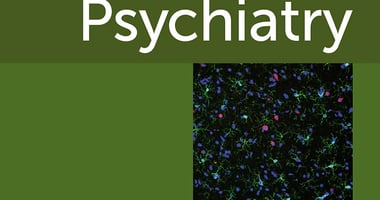Four of the articles chosen as the NEJM Journal Watch Psychiatry’s top 10 most clinically important...
Attention Bias Modification Treatment Found Effective for Social Anxiety Disorder

People with social anxiety disorder may benefit from an intervention that trains them to focus their attention on neutral facial expressions more than negative ones, according to a report in AJP in Advance. In a clinical trial, participants with social anxiety disorder who received 10 sessions of an attention bias modification treatment over 12 weeks experienced similar symptom improvements as those who received 12 weeks of escitalopram—a first-line treatment for the disorder.
“Social anxiety disorder involves chronic fear and avoidance of scrutiny,” wrote Gal Arad, M.A., of Tel Aviv University, Daniel S. Pine, M.D., of the National Institutes of Mental Health, and colleagues. “Patients with social anxiety, as compared to healthy peers, dwell longer on scowling facial expressions, a tendency implicated in the maintenance of the disorder.”
To test if shifting one’s attention from negative expressions to more neutral ones might reduce social anxiety symptoms, Arad, Pine, and colleagues recruited 105 adults (average age 31) seeking treatment for social anxiety. The participants were randomly assigned to one of three groups:
- One group received 12 weeks of gaze-contingent music reward therapy (GC-MRT).
- Another received 12 weeks of escitalopram (up to 20 mg/daily).
- The third group was placed on a waitlist for 12 weeks.
Participants in the GC-MRT group received one introductory session the first week, where they learned about how GC-MRT works. Beginning week 2 through week 5, the participants received 10, 20-minute GC-MRT sessions twice a week, as well as one session weeks 8 and 11. In each session, the participants were shown a set of neutral and scowling faces on a computer screen. When the participants fixated on a neutral face, music played (from a music track they chose); when they shifted focus to a threatening face, the music stopped.
The researchers assessed the study participants halfway through the trial and again at week 13 using the clinician-rated total severity score on the Liebowitz Social Anxiety Scale and the self-reported Social Phobia Inventory.
Relative to the participants on the waitlist, those in the GC-MRT and escitalopram groups showed lower symptom severity at the midtreatment and posttreatment assessments. For comparison, the waitlist group showed minimal improvements on either scale.
“GC-MRT presents low demands on patients, is short term, and requires minimally trained professionals, making it a viable treatment option,” Arad, Pine, and colleagues wrote.
For related information, see the American Journal of Psychiatry article “Harnessing the Power of Gaze Through Music.”
(Image: iStock/Tero Vesalainen)
Don't miss out! To learn about newly posted articles in Psychiatric News, please sign up here.






